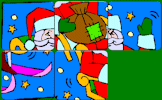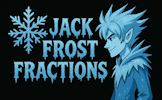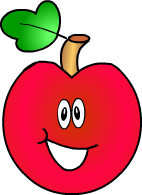\(\mathbb N\): The set of natural or counting numbers 0, 1, 2, 3, etc. Some say this set does not include zero.
\(\mathbb Z\): The set of integers. This set is the same as the set of natural numbers but includes the negative whole numbers.
\(\mathbb Q\): The set of rational numbers. These are the numbers that can be expressed as a proper fraction or one integer divided by another.
\(\mathbb R\): The set of real numbers. That is probably all the numbers you know unless you have studied the topic of Complex Numbers.
Hide/Show
$$\mathbb R$$
$$\mathbb Q$$
$$\mathbb Z$$
$$\mathbb N$$
\(\text{one million}\)
\(\frac34\)
\(\cos 40^o\)
\(\pi\)
\(\sin 30^o\)
\(-\sqrt9\)
\(\frac{57}{9}\)
\(\frac23\)
\(\sqrt2\)
\(1.\dot4\dot2\)
\(\frac12\div\frac12\)
\(7\)
\(-2.479315...\)
\(1.3\)
\(1\div6\)
Featured Activity
ChrisMaths

Christmas activities make those December Maths lessons interesting, exciting and relevant. If students have access to computers there are some online activities to keep them engaged such as Christmas Ornaments and Christmas Light Up.
Check
Drag the numbers into the correct sets as shown in the Venn diagram above. When you have finished click on the 'Check' button above.
If you make any mistakes don't forget to do your corrections! You can have as many attempts as you want to get the right answer.
There is a solution and ad-free version of this activity available to those who have a Transum Subscription.
There are other related activities on the Transum Mathematics website to support your understanding of number.
Venn Diagram
Sieve of Eratosthenes
Satisfaction
Recurring Decimals
Number
Recently Updated
Jack Frost Fractions

Find fractions of frosty fractions in this ten stage challenge. So far this activity has been accessed 175 times and 3 people have earned a Transum Trophy for completing it.




Strange But True,
Monday, August 5, 2019
"Most natural numbers are very, very large!"